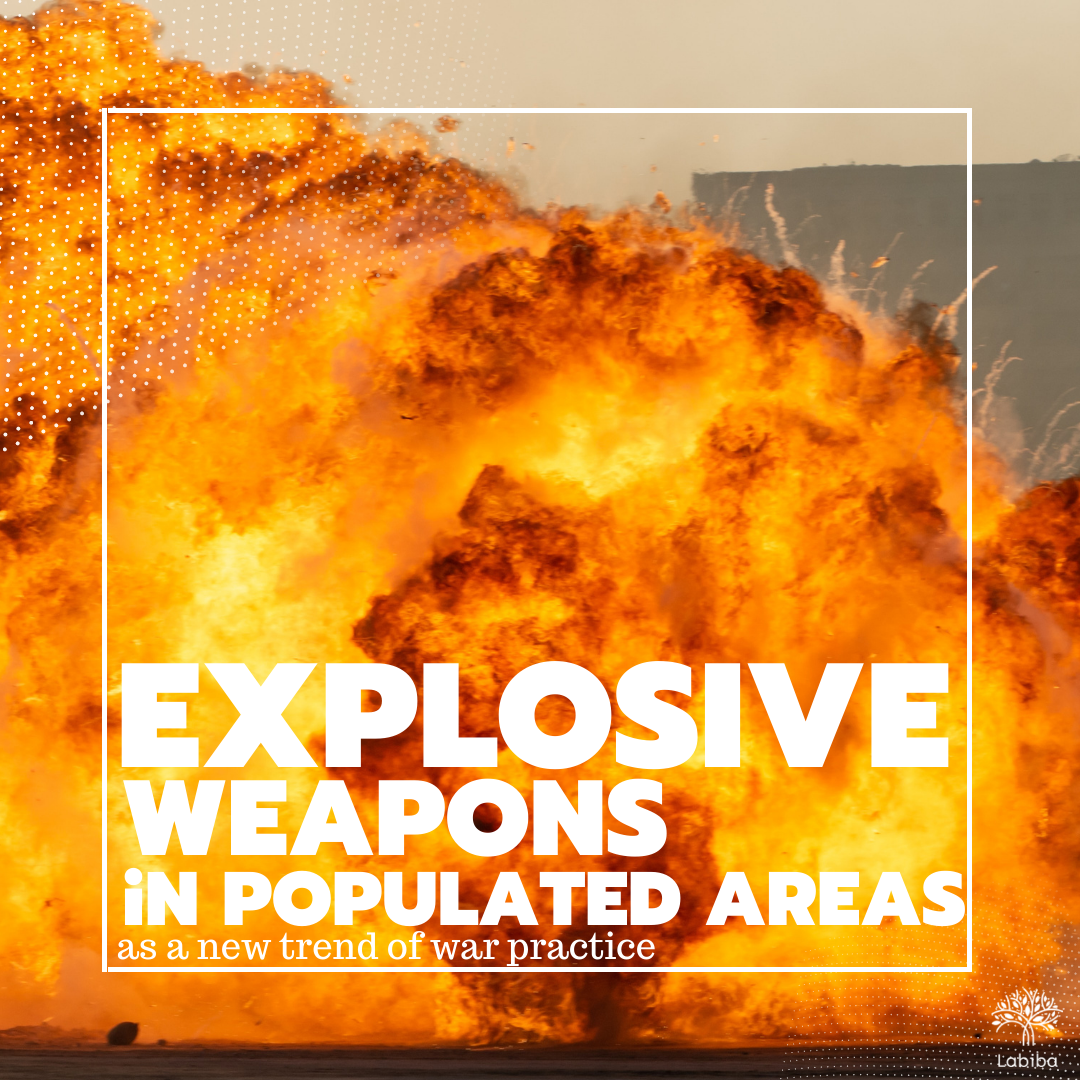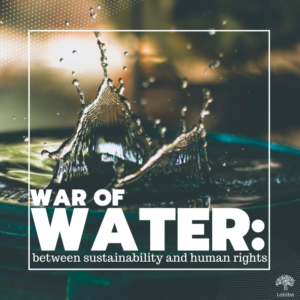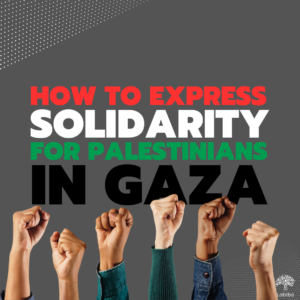Over the last years, armed conflicts have been fought increasingly within the cities with typical battlefield weapons (Libya, Syria, Iraq, Ukraine, Yemen are only a few examples). Thus, civilians were exposed to a higher risk of death, injury, displacement and negative mental health drawbacks. Explosive weapons directed to highly populated areas (EWIPA) can also affect civilian infrastructures and essential services; like the healthcare system, schools, energy and water supply grids, and waste management systems (i.e. domino effect). This trend is predicted to remain (as proved by the 2021 conflict between Israel and Palestine) and increase, together with the concern for its consequences on the societies exposed to conflicts.
International Humanitarian Law regarding the use of Explosive Weapons In Populated Areas
In 2011, the International Committee of the Red Cross (ICRC) stated that “due to the significant likelihood of indiscriminate effects and despite the absence of an express legal prohibition for specific types of weapons, the ICRC considers that explosive weapons with a wide impact area should be avoided in densely populated areas.”. However, as noted in the ICRC speech, no formal and legal prohibition on this specific type of weapons in populated areas exists; the International Humanitarian Law (IHL) collects all norms governing the choice of means and methods of warfare, and yet never mentions explicitly the interdiction of explosive weapons. Despite this specific legislative vacuum, the basic principles of IHL lead by logic to the prohibition of this practice, particularly in the followings:
- the rule of distinction: the prohibition of direct attacks at civilians or civilian objects, as opposed to military objectives (“attacks which are not directed at a specific military objective are prohibited”)
- the rule of proportionality in attack ( “indiscriminate attacks are prohibited […] (cfr. for example) an attack which may be expected to cause incidental loss of civilian life, injury to civilians, damage to civilian objects, or a combination thereof, which would be excessive in relation to the concrete and direct military advantage anticipated” )
- and precautionary principle to avoid countereffect on population (i.e. reverberating effects) (“The following precautions shall be taken: […] take all feasible precautions in the choice of means and methods of attack with a view to avoiding, and in any event to minimizing, incidental loss of civilian life, injury to civilians and damage to civilian objects”).
Israeli forces have often used this unfair practice against Palestine. Since 2000, many UN resolutions have condemned Israel acts of excessive and indiscriminate use of force against the civilian population. This violence resulted in deaths, injuries, massive destruction of homes, properties, agricultural lands and vital infrastructure. One of the latest events is the 11-days conflict of May 2021.
The armed conflict of May 2021 between Israel and Palestine
Airwars is a no-profit and impartial organization focused on reducing battlefield civilian casualties by analysing data from local journalists, citizens, state and non-state actors; in December 2021 they published a report on the casualties resulting from the 11-days conflict between Israel and two Palestinian militant factions happened in May 2021.
The report identifies 128 locally reported civilian harm events. Up to 214 civilians were killed in Gaza, while 612 to 847 Palestinians were reported injured, many seriously. Over a third of these reported civilian victims of Israeli strikes were children; and in 101 of the incidents where civilians were reported harmed in Gaza during May, no local community report or official statement of militants being killed was found (rule of proportionality).
During the conflict, Gaza fired missiles, and while most were either shot down, fell short, or landed in less populated areas, the ones that got through to urban areas caused casualties. 33 locally reported civilian harm events, in which Palestinian rockets between them directly killed 10 civilians in Israel, and injured others between 105 and 165.
This report also provides a volumetric map representing the number of civilians killed in each Palestinian neighbourhood during the May 2021 conflict. The higher the level of the neighbourhood on the map, the greater the number of fatalities reported. The most significant area is Al-Rimal, where 69 or more civilians were reported killed; as indicated by the higher trend of neighbourhood levels, civilians were most likely to be harmed in northern areas of the Gaza Strip.
The ICRC Trinity Model of EWIPA effects applied to the May 2021 conflict
In February 2015, the ICRC convened a meeting which brought together government experts from 17 States, weapons experts, and representatives of UN agencies and NGOs, to discuss EWIPA. The ICRC introduced the concept of the “Trinity Model”, which aims to detail the three factors that determine the effects of the use of explosive weapons in populated areas:
- The environment; urbanized areas are more prone to possible reverberating effects on population: waste materials after a blast wave can create additional deaths and injuries. 🡪 Among the targets of the Israel Defence Forces airstrikes were 15 high-rise buildings, with damages varying from severe to complete destruction, thus leading to a high probability of many civilians injured in just one strike. Attacks on buildings – ‘urbicide’ – are popular means to break spirits, and crush economies and community identities.
- The vulnerability of the civilians; a high population density in the proximity of the target will probably mean a higher number of harms to civilians. 🡪 In 2018 Palestine ranked 15th among a list of 250 countries in the world for population density. Gaza is one of the most populated area on earth; for comparison, London’s population density is around 5,700 people per square kilometre, while the rate is more than 9,000 people per square kilometre in Gaza city.
- The weapon and its kinetic factors; wide-impact-radius weapons (e.g., large bombs or missiles), low-accuracy weapons (i.e., unguided indirect fire weapons, including artillery and mortars) and multiple-munition weapons (e.g., multi-launch rocket systems) will cause more damages to the population. Weapons employed in the 2021 conflict are definitely in a wide-impact area, like missiles.
International commentaries and responses on the May 2021 Conflict
After raising awareness about the “grave human rights situation in the Occupied Palestinian Territory, including East Jerusalem”, on May 27 the UN HRC (UN Human Rights Council) adopted a resolution focused on the respect for IHL and HR in the Occupied Palestinian Territory and Israel.
It established an international commission of inquiry to investigate violations of international humanitarian law and all alleged violations and abuses of international human rights law leading up to and since April 13, 2021. The commission will report on its main activities to the Human Rights Council and the General Assembly annually, starting in June and September 2022 respectively.
We can only hope that the commission, working closely with the population, will take proper action against these violations and that the increasing awareness in the international community about the gravity of EWIPA will lead to the abandonment of this practice.
Silvia Pizzigoni




